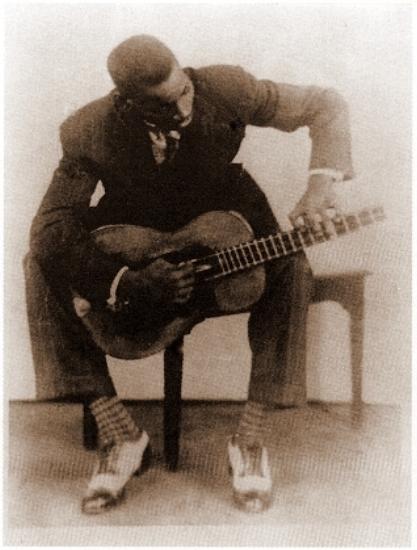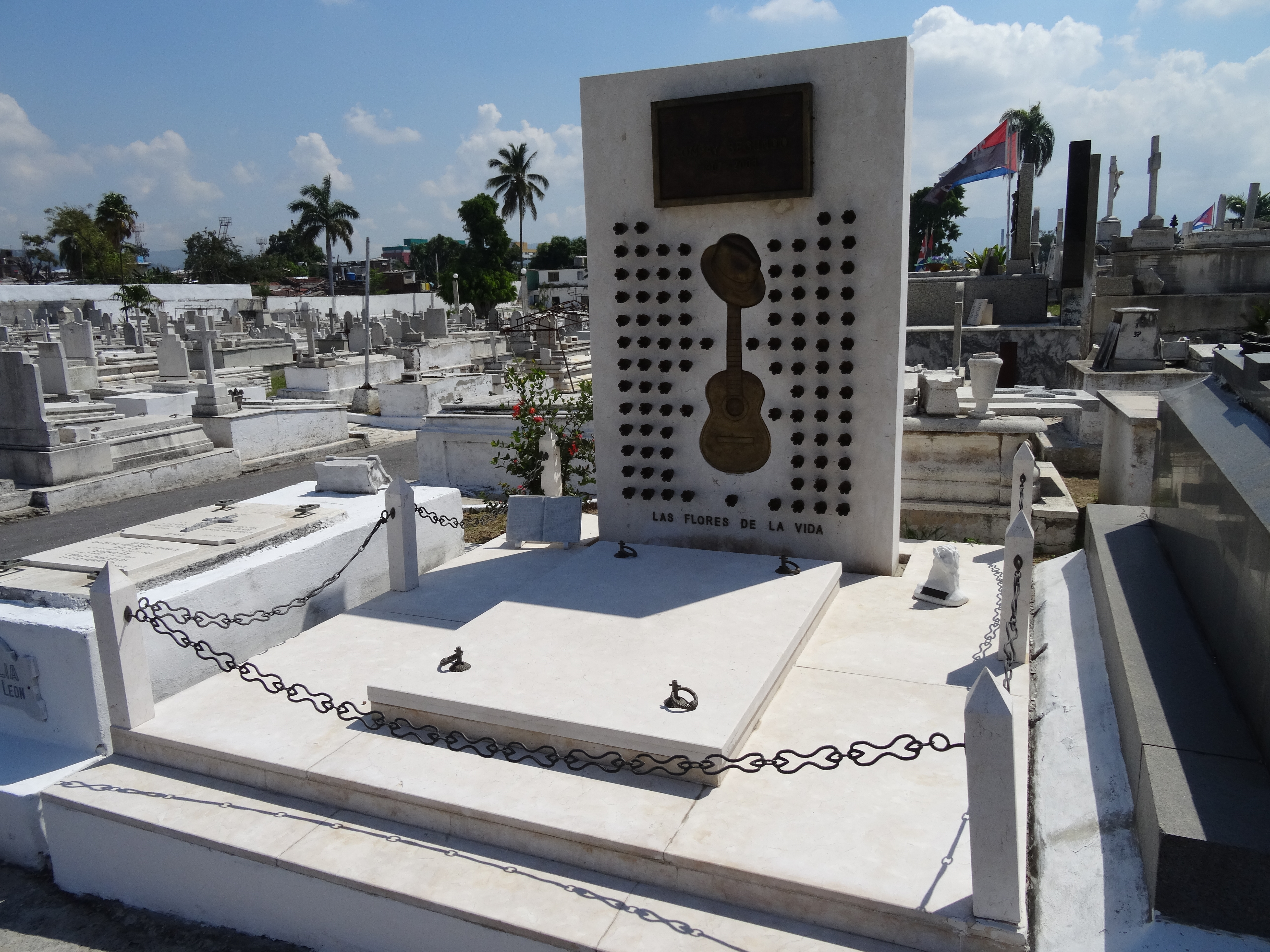|
Armónico
The armónico, also known as trilina, is a guitar-like instrument from Cuba. It is a hybrid between the Spanish guitar and the Cuban tres. The armónico has seven strings: five single strings, plus one pair of strings tuned in unison. The armónico was invented by Cuban trova musician Compay Segundo, who loved the instrument as it allowed him to exploit the possibilities of both the guitar and the tres. Counting from the lowest-pitched, the first three strings, E, A and D, are tuned an octave higher than the equivalent strings on a guitar with standard tuning. The fourth string, G, is doubled as well as also being an octave higher than on a guitar. The remaining two, B and E, are at the same pitch as a standard guitar. Therefore, the bottom E string is only one octave lower than the top E string on the armónico, instead of two octaves lower on the guitar. [...More Info...] [...Related Items...] OR: [Wikipedia] [Google] [Baidu] |
Guitar
The guitar is a fretted musical instrument that typically has six strings. It is usually held flat against the player's body and played by strumming or plucking the strings with the dominant hand, while simultaneously pressing selected strings against frets with the fingers of the opposite hand. A plectrum or individual finger picks may also be used to strike the strings. The sound of the guitar is projected either acoustically, by means of a resonant chamber on the instrument, or amplified by an electronic pickup and an amplifier. The guitar is classified as a chordophone – meaning the sound is produced by a vibrating string stretched between two fixed points. Historically, a guitar was constructed from wood with its strings made of catgut. Steel guitar strings were introduced near the end of the nineteenth century in the United States; nylon strings came in the 1940s. The guitar's ancestors include the gittern, the vihuela, the four- course Renaissance guitar, and the ... [...More Info...] [...Related Items...] OR: [Wikipedia] [Google] [Baidu] |
Cuba
Cuba ( , ), officially the Republic of Cuba ( es, República de Cuba, links=no ), is an island country comprising the island of Cuba, as well as Isla de la Juventud and several minor archipelagos. Cuba is located where the northern Caribbean Sea, Gulf of Mexico, and Atlantic Ocean meet. Cuba is located east of the Yucatán Peninsula (Mexico), south of both the American state of Florida and the Bahamas, west of Hispaniola ( Haiti/Dominican Republic), and north of both Jamaica and the Cayman Islands. Havana is the largest city and capital; other major cities include Santiago de Cuba and Camagüey. The official area of the Republic of Cuba is (without the territorial waters) but a total of 350,730 km² (135,418 sq mi) including the exclusive economic zone. Cuba is the second-most populous country in the Caribbean after Haiti, with over 11 million inhabitants. The territory that is now Cuba was inhabited by the Ciboney people from the 4th millennium BC with the Gua ... [...More Info...] [...Related Items...] OR: [Wikipedia] [Google] [Baidu] |
Classical Guitar
The classical guitar (also known as the nylon-string guitar or Spanish guitar) is a member of the guitar family used in classical music and other styles. An acoustic wooden string instrument with strings made of gut or nylon, it is a precursor of the modern acoustic and electric guitars, both of which use metal strings. Classical guitars derive from the Spanish vihuela and gittern of the fifteenth and sixteenth century. Those instruments evolved into the seventeenth and eighteenth-century baroque guitar—and by the mid-nineteenth century, early forms of the modern classical guitar. For a right-handed player, the traditional classical guitar has twelve frets clear of the body and is properly held up by the left leg, so that the hand that plucks or strums the strings does so near the back of the sound hole (this is called the classical position). However, the right-hand may move closer to the fretboard to achieve different tonal qualities. The player typically holds the left leg ... [...More Info...] [...Related Items...] OR: [Wikipedia] [Google] [Baidu] |
Tres (musical Instrument)
The tres (Spanish for ''three'') is a three- course chordophone of Cuban origin. The most widespread variety of the instrument is the original Cuban tres with six strings. Its sound has become a defining characteristic of the Cuban son and it is commonly played in a variety of Afro-Cuban genres. In the 1930s, the instrument was adapted into the Puerto Rican tres, which has nine strings and a body similar to that of the cuatro. The tres developed in the second half of the 19th century in the eastern region of Guantánamo, where it was used to play changüí, a precursor of son cubano. Its exact origins are not known, but it is assumed to have developed from the 19th century Spanish guitar, which it resembles in shape, as well as the laúd and bandola, two instruments used in punto cubano since at least the 18th century. Tres playing revolves around the ''guajeo'', an '' ostinato'' pattern found in many Afro-Cuban music styles. Tres players are commonly known as ''treseros'' (in C ... [...More Info...] [...Related Items...] OR: [Wikipedia] [Google] [Baidu] |
Trova
''Trova'' is a style of Cuban popular music originating in the 19th century. Trova was created by itinerant musicians known as ''trovadores'' who travelled around Cuba's Oriente province, especially Santiago de Cuba, and earned their living by singing and playing the guitar. According to nueva trova musician Noel Nicola, Cuban trovadors sang original songs or songs written by contemporaries, accompanied themselves on guitar, and aimed to feature music that had a poetic sensibility. This definition fits best the singers of boleros, and less well the Afrocubans singing funky sones ( El Guayabero) or even guaguancós and abakuá (Chicho Ibáñez). It rules out, perhaps unfairly, singers who accompanied themselves on the piano. ''Trova'' musicians have played an important part in the evolution of Cuban popular music. Collectively, they have been prolific as composers, and have provided a start for many later musicians whose career lay in larger groupings. Socially, they reached ev ... [...More Info...] [...Related Items...] OR: [Wikipedia] [Google] [Baidu] |
Compay Segundo
Máximo Francisco Repilado Muñoz Telles (18 November 1907 – 13 July 2003), known professionally as "Compay Segundo", was a Cuban trova guitarist, singer and composer. Biography Compay (meaning ''compadre'') Segundo, so called because he was always second voice in his musical partnerships, was born in Siboney, Cuba, and moved to Santiago de Cuba at the age of nine. His first engagement was in the Municipal Band of Santiago de Cuba, directed by his teacher, Enrique Bueno. In 1934, after a spell in a quintet, he moved to Havana, where he also played the clarinet in the Municipal Band. He also learned to play the guitar and the tres, which became his usual instruments. Compay Segundo also invented the armónico, a seven-stringed guitar-like instrument, to fill the harmonic jump between the Spanish guitar and the tres."Compay Segundo" [...More Info...] [...Related Items...] OR: [Wikipedia] [Google] [Baidu] |
Octave
In music, an octave ( la, octavus: eighth) or perfect octave (sometimes called the diapason) is the interval between one musical pitch and another with double its frequency. The octave relationship is a natural phenomenon that has been referred to as the "basic miracle of music," the use of which is "common in most musical systems." The interval between the first and second harmonics of the harmonic series is an octave. In Western music notation, notes separated by an octave (or multiple octaves) have the same name and are of the same pitch class. To emphasize that it is one of the perfect intervals (including unison, perfect fourth, and perfect fifth), the octave is designated P8. Other interval qualities are also possible, though rare. The octave above or below an indicated note is sometimes abbreviated ''8a'' or ''8va'' ( it, all'ottava), ''8va bassa'' ( it, all'ottava bassa, sometimes also ''8vb''), or simply ''8'' for the octave in the direction indicated by placing ... [...More Info...] [...Related Items...] OR: [Wikipedia] [Google] [Baidu] |
Trova
''Trova'' is a style of Cuban popular music originating in the 19th century. Trova was created by itinerant musicians known as ''trovadores'' who travelled around Cuba's Oriente province, especially Santiago de Cuba, and earned their living by singing and playing the guitar. According to nueva trova musician Noel Nicola, Cuban trovadors sang original songs or songs written by contemporaries, accompanied themselves on guitar, and aimed to feature music that had a poetic sensibility. This definition fits best the singers of boleros, and less well the Afrocubans singing funky sones ( El Guayabero) or even guaguancós and abakuá (Chicho Ibáñez). It rules out, perhaps unfairly, singers who accompanied themselves on the piano. ''Trova'' musicians have played an important part in the evolution of Cuban popular music. Collectively, they have been prolific as composers, and have provided a start for many later musicians whose career lay in larger groupings. Socially, they reached ev ... [...More Info...] [...Related Items...] OR: [Wikipedia] [Google] [Baidu] |
Son Montuno
Son montuno is a subgenre of son cubano developed by Arsenio Rodríguez in the 1940s. Although ''son montuno'' ("mountain sound") had previously referred to the ''sones'' played in the mountains of eastern Cuba, Arsenio repurposed the term to denote a highly sophisticated approach to the genre in which the montuno section contained complex horn arrangements. He also incorporated piano solos and often subverted the structure of songs by starting with the montuno in a cyclic fashion. For his approach, Arsenio had to expand the existing ''septeto'' ensemble into the ''conjunto'' format which became the norm in the 1940s alongside big bands. Arsenio's developments eventually served as the template for the development of genres such as salsa, songo and timba. Background Son cubano developed in the late 19th century and soon became the most important genre of Cuban popular music. In addition, it is perhaps the most flexible of all forms of Latin American music, and is the foundation o ... [...More Info...] [...Related Items...] OR: [Wikipedia] [Google] [Baidu] |
Guitar Family Instruments
The guitar is a fretted musical instrument that typically has six strings. It is usually held flat against the player's body and played by strumming or plucking the strings with the dominant hand, while simultaneously pressing selected strings against frets with the fingers of the opposite hand. A plectrum or individual finger picks may also be used to strike the strings. The sound of the guitar is projected either acoustically, by means of a resonant chamber on the instrument, or amplified by an electronic pickup and an amplifier. The guitar is classified as a chordophone – meaning the sound is produced by a vibrating string stretched between two fixed points. Historically, a guitar was constructed from wood with its strings made of catgut. Steel guitar strings were introduced near the end of the nineteenth century in the United States; nylon strings came in the 1940s. The guitar's ancestors include the gittern, the vihuela, the four-course Renaissance guitar, and the f ... [...More Info...] [...Related Items...] OR: [Wikipedia] [Google] [Baidu] |






